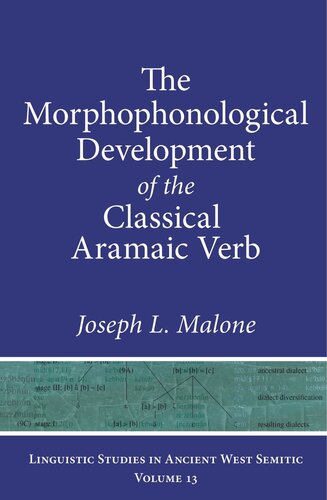

Most ebook files are in PDF format, so you can easily read them using various software such as Foxit Reader or directly on the Google Chrome browser.
Some ebook files are released by publishers in other formats such as .awz, .mobi, .epub, .fb2, etc. You may need to install specific software to read these formats on mobile/PC, such as Calibre.
Please read the tutorial at this link: https://ebookbell.com/faq
We offer FREE conversion to the popular formats you request; however, this may take some time. Therefore, right after payment, please email us, and we will try to provide the service as quickly as possible.
For some exceptional file formats or broken links (if any), please refrain from opening any disputes. Instead, email us first, and we will try to assist within a maximum of 6 hours.
EbookBell Team

0.0
0 reviewsThis book offers a diachronic and synchronic account of the verb morphology and phonology of Aramaic from its initial appearance early in the first millennium B.C.E. until the second millennium C.E.
Aramaic, a subfamily of Semitic, is closely related to Hebrew and the other Canaanite languages; together, the two subfamilies of Aramaic and Canaanite constitute the northwest branch of the Semitic phylum. In this study, Joseph L. Malone focuses on thirteen dialects of Aramaic, chosen from a candidate list of approximately twice that number. The specific varieties of Aramaic examined here are chosen to provide an optimal chronological and geographical range. In a similar vein, the finite verb serves as the subject of this study, based on the assumption that a thorough treatment of the verb will asymptomatically involve most of the patterns and processes that hold for the grammar as a whole. The tools of this study are drawn from standard generative linguistics, though care is taken to explicate these in more traditional terms where it is deemed necessary.
This book is essential reading for linguists who study the Semitic language families, and in particular those interested in Northwest Semitic languages.